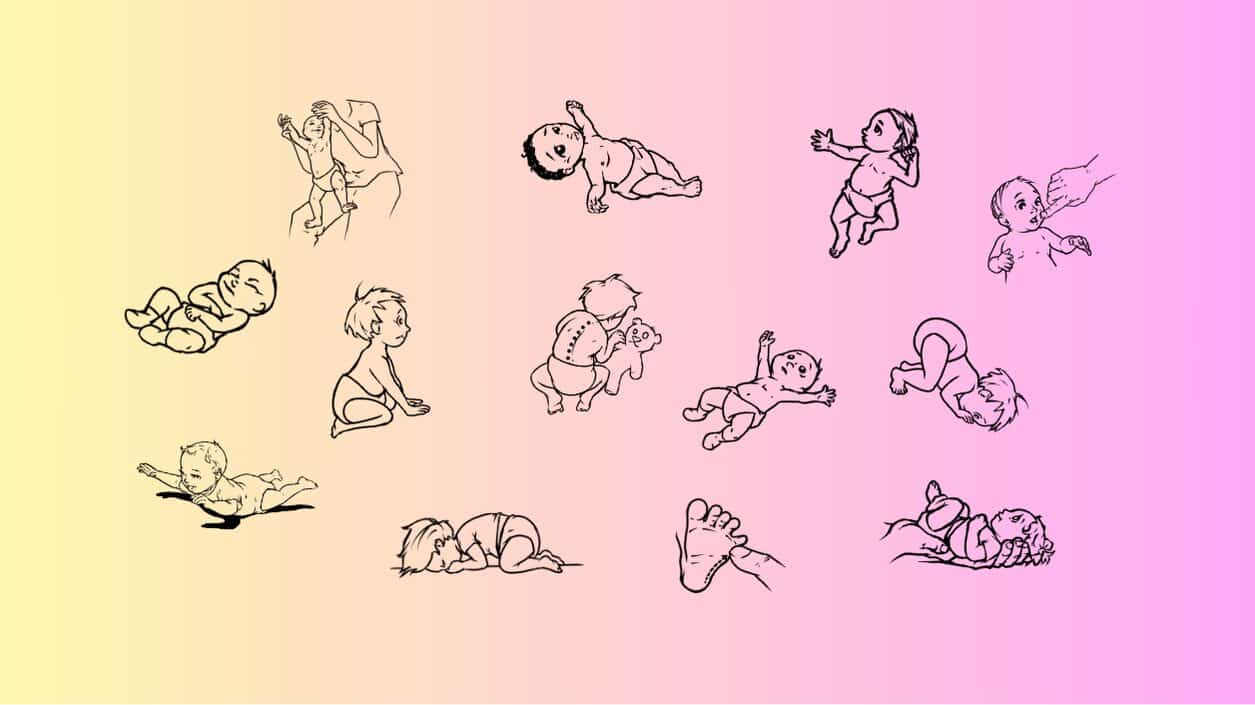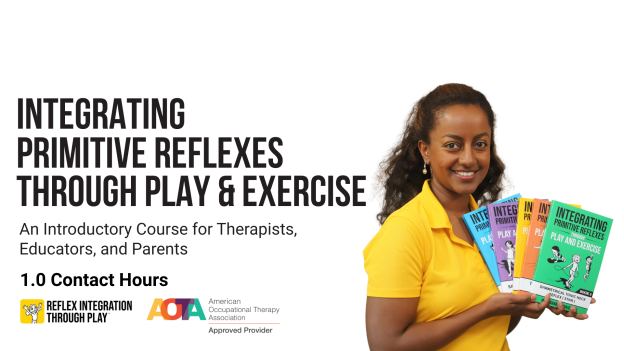An Introductory Course for Therapists, Parents, and Educators
A 1-hour CEU training based on the RITP Book Series
Why this matters
Primitive reflexes shape early development—and when they linger, they can impact attention, posture, handwriting, vision skills, and classroom participation. This fast, practical training shows you how to spot key patterns and integrate simple, play-based activities right away.
Who it’s for
- Occupational & Physical Therapists (clinic or school-based)
- Educators & Parent Coaches supporting movement and learning
- Parents & Caregivers looking for clear, doable strategies
What we’ll cover (in just 60 minutes)
- A clear framework for linking reflex patterns to functional goals
- Quick screening & observation you can do in minutes
- Play-based activities drawn from the RITP Book Series
- How to embed movement into daily routines at home and school
Learning Objectives
By the end of this one-hour introductory course, participants will be able to:
- Identify the role of primitive reflexes in early development and their impact on functional performance in children.
- Recall the importance of reflex integration for motor skills, attention, regulation, and learning.
- Recognize common signs of retained primitive reflexes that may present in clinical, school, or home settings.
- Identify play-based reflex integration strategies and exercises to meet functional goals.
Based on the RITP Book Series
This course distills core concepts from Integrating Primitive Reflexes Through Play and Exercise and designed to give you practical, play-based tools you can start using right away.

References
AOTA Best Practices Recommendations (Choosing Wisely), #8: Don’t use reflex integration programs for individuals with delayed primary motor reflexes without clear links to occupational outcomes. https://www.aota.org/practice/practice-essentials/evidencebased-practiceknowledge-translation/aotas-top-10-choosing-wisely-recommendations
Retained Primitive Reflexes and Potential for Intervention in Autistic Spectrum Disorders. Melillo R, Leisman G, Machado C, Machado-Ferrer Y, Chinchilla-Acosta M, Kamgang S, Melillo T, Carmeli E. Front Neurol. 2022 Jul 7;13:922322. doi: 10.3389/fneur.2022.922322. PMID: 35873782; PMCID: PMC9301367. https://www.ncbi.nlm.nih.gov/pmc/articles/PMC9301367/
Persistent childhood primitive reflex reduction effects on cognitive, sensorimotor, and academic performance in ADHD. Melillo, R., Leisman, G., Mualem, R., Ornai, A., & Carmeli, E. (2020). Frontiers in Public Health, 8. https://doi.org/10.3389/fpubh.2020.431835
Primitive Reflex Activity in Relation to Motor Skills in Healthy Preschool Children. Anna Pecuch, Ewa Gieysztor, Ewelina Wolańska, Marlena Telenga, and Małgorzata Paprocka-Borowicz. (2021) https://www.ncbi.nlm.nih.gov/pmc/articles/PMC8394673/
Integration exercise programme for children with learning difficulties who have preserved vestigial primitive reflexes. Grzywniak C. Acta Neuropsychol. (2017)
Integration of Infant Dynamic and Postural Reflex Patterns-MNRI (Masgutova Neurosensorimotor Reflex Integration). Svetlana Rihanna Masgutova Ketubah, PhD. (2007)
Reflexes, Learning and Behavior: A Window into the Child’s Mind. Sally Goddard. (2002)
Can Replicating Primary Reflex Movements Improve Reading Ability? Timothy Wahlberg, PhD, Dennis Ireland, OD, Med. Optometry and Vision Development. (2005)Persistent Primitive Reflexes in Elementary School Children. Bein-Wierzbinski, W.. Presented at the 13th European Conference of Neuro-Developmental Delay in Children with Specific Learning Difficulties Chester, UK (2001).
good intro, i was looking for some helpful strategies too
I was looking for treatment strategies and ideas.
Quick introduction on primitive reflexes. Big push download the app for deeper information and treatment strategies.
quick and to the point on the PR information.
Amazing explanation
Presenter moved quickly through information. Would have liked more discussion on treatment strategies for treatment sessions.
Good introduction to reflexes and their impact as well as reflexes to go more in depth.
You must log in and have started this course to submit a review.




Nice introduction and review of primitive reflexes.